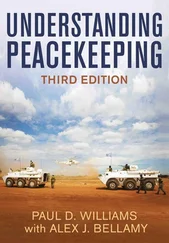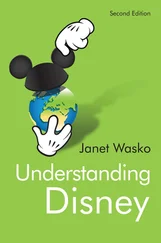Interestingly, sex still makes good content as a juicy secret, but I expect that it is not as juicy as it once was. I think this is in part because modern communication has exposed so many “private” lives; thus, few sexual secrets shock anymore. Indeed, it is part of postmodern culture to be jaded and unfazed by sexual secrets. Sex is less of a big deal, and not to be hidden away in the same way as it used to be. So, it is still a monster, but one with less ferocity.
Why am I telling you all this? And what does it have to do with asexuality? Because the two points I have made here—there are no more secrets, and sexuality is less of a taboo to keep hidden than it once was—are both relevant to the issues of paraphilias and asexuality. First, people are less motivated to keep their sexual lives, or the lack thereof, hidden. So, do I believe people when they tell me that they are asexual? Well, yes, even if it is a bit of a qualified “yes.” Moreover, self-identified asexuals may not hide unusual sexual interests, if they do have them. Second, if people have a secret sex life (e.g., a paraphilia that they don’t want to reveal), this can still be found out. With their secrets revealed, these people will join the throng of others displaying sexual monsters on their backs, even if these monsters are less ferocious and less unspeakable than they once were.
CHAPTER 11
Art and Food on Planet Sex
In chapter 8, I introduced an old man who said that, nowadays, the bathing beauties in the famous Sports Illustrated swimsuit issue “did nothing” for him. I suggested that his newfound sexless world had something in common with a lifelong asexual person’s world. I also suggested that average sexual people may also have glimpses of this world when their normally sexed brains are turned off for brief periods.
Though sexual people may have temporary glimpses of what asexual people experience, this is not to say that sexual people’s brushes with sexual disinterest capture perfectly the true “phenomenology” of the asexuality. Recall that asexual people are likely a diverse bunch, so one type of lens on the world of sexuality (or asexuality) does not fit all. In addition, for many asexual people, an even deeper level of disconnection to the sexual world occurs than what is suggested by, for example, the old man’s current take on sex, or other sexual people’s bouts of sexual disinterest. This is because many asexual people have a complete (or nearly complete) lack of sexual attraction, not just a lack of current sexual interest. Thus, returning to our example of the old man, he did recognize that these swimsuit models were sexually attractive. Perhaps he could have mustered some level of sexual interest if one of these bathing beauties magically appeared in his apartment, ready for some action. Or perhaps he would have been titillated by these images if he were given a booster shot of testosterone, as there is evidence that this hormone is linked to sex drive and declines with age (Lamberts, van den Beld, & van der Lely, 1997).
For many asexual people, such inducements (e.g., swimsuit models appearing fantasy-like in one’s bedroom; a shot of testosterone) would likely have little effect. For many asexual people, there is likely no underlying sexual attraction at all; that is, there is no sexual connection that can be pulled to the surface, and perhaps even no real recognition that these models are “sexually attractive,” except perhaps on an abstract level, having taken in our culture’s norms and standards of sexual beauty. Thus, asexual people probably experience the sexual world, inducements notwithstanding, differently than the rest of the planet.
In this chapter, I explore the phenomenology (or lived experience) of asexuality; more specifically, this chapter is an exploration of a hypothetical lived experience, as I ask what life would be like if all people were asexual. I do this to give insight into the lives of asexual people, but also to see how embedded sex is within many human cultures, both past and present. So, what would a sexless planet (or, more specifically, a sexless culture) truly be like? To answer this question, let us speed by the glaringly and often numbingly obvious aspects of our oversexed pop culture—including pornography, TV shows’ titillation, or, yes, the swimsuit edition of Sports Illustrated —and head into the subtle and deeper recesses of our sex-infused culture. Thus, let’s touch on those areas of our culture that seem immune to its influence, yet may not be. To begin, let’s venture into one of the more refined areas of our culture on Planet Sex: art.
I have no talent for it, but I have a fondness for fine art, especially painting. My interest derives partly from exposure to painting through some of my family and friends, some of whom do in fact have a talent for it. While wandering through galleries, eyeing renderings from various classical and modern eras, it is hard to avoid the conclusion that sexual interest and attraction has always driven, at least partly, aesthetic sensibilities. The nude in particular—especially the female nude—has been standard content for years, and it is difficult not to conclude that the sexuality of the primarily male, heterosexual artists who created these images, in both Western and non-Western societies, has had a major impact on these works.
Indeed, I sometimes wonder as I stroll around galleries what the history of art would be like without sex—broadly defined—as a subject matter. This extends into subject matters and content in art beyond the depictions of (female) nudes, although I am using this example to illustrate my point. I’ve even imagined, with tongue in cheek, whether curators might close down their galleries if for some reason a woman’s body was not allowed to be shown, as there would be no be art left to display! I’ve imagined big, flashing neon signs outside of galleries announcing, Gallery closed due to shortage of nudes…. Gallery closed due to shortage of nudes…. Gallery closed due to shortage of nudes….
Of course I am exaggerating the point, as there is a myriad of themes in art beyond women’s bodies. I am also not arguing that nudity and the human body are found in art only because of people’s sexual attraction to them. After all, nudity and the human body itself have been portrayed in art to illustrate various “nonsexual” themes—for example, the creation story in Albrecht Dürer’s Adam and Eve could be construed as such. Indeed, there is a tradition in art of distinguishing “the nude” from “the naked.” “The nude” shows the unclothed body because it is integral to or part of the natural condition of the subject or the scene (e.g., Greek gods were often depicted without clothes) (Clark, 1956). In contrast, with “the naked,” a sexual intent is often presumed if the unclothed state is not a natural condition of the subject or the scene (e.g., a nurse still wearing part of her uniform).
Yet there is ambiguity here, as the meaning of “natural” is dubious, as is the distinction between nudity and nakedness. Isn’t being out of one’s clothes, even partially, more natural than, say, wearing a uniform? Art critic Charles Darwent (2008) also points out that the distinction between nude and naked is often blurred and slippery. He uses a painting by Philip Wilson Steer called Seated Nude: The Black Hat to illustrate his point. In this painting, an attractive woman is seated without clothes, but she does have on her head an elaborate black hat. Steer evidently never allowed this painting to be viewed. He was influenced by some of his friends, who argued that the woman’s “nudity” (and of course the title indicates that this is a “nude”) was in fact an instance of “nakedness,” in part because the affectation on her head implies, presumably, an unnatural and sexualized context.
Читать дальше












